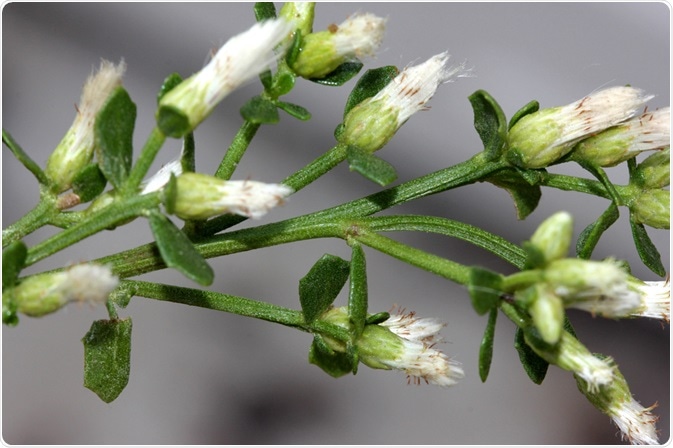Herbal medicines have been used for centuries in Asian countries, yet many of the active ingredients of such therapies remain unknown. Now, researchers from Argentina and Chile have carried out an assessment of the in vitro medicinal effects of the South American 'quilchamalí plant', or Baccharis grisebachii.
The biological activity of quilchamalí infusions was elucidated using ultra-high-performance liquid chromatography (UHPLC) coupled to both a photodiode array (PDA) absorbance detector and a quadrupole orbitrap (Q-OT) mass spectrometer (UHPLC-PDA-Q-OT-MS).
 Gurcharan Singh | Shutterstock
Gurcharan Singh | Shutterstock
Natural products are chemically complex mixtures, which makes their analysis challenging. However, herbal medicines are a great source material for drug discovery as new compounds, or new formulations of compounds can be identified. This has become increasingly feasible by using high-throughput analytical methods such as liquid chromatography coupled to mass spectrometry (LC-MS).
Recently, a research collaboration from Argentina and Chile, led by Professors Mario J. Simirgiotis and Alejandro Tapia, have identified the active ingredients in infusions prepared from the South American quilchamalí plant Baccharis grisebachii) with an advanced LC-MS method using both a light absorbance and a mass spectrometry detector (UHPLC-PDA-Q-OT-MS).
Quilchamalí ingredients prevent gastric ulcers in rats, but how?
The researchers collected flowering quilchamalí in Argentina to prepare infusions. The infusions were separated by UHPLC equipped with the double detector system to identify metabolites. Notably, light absorbance in the UV range is a sensitive detection method for aromatic compounds such as polyphenols or flavonoids, while the mass spectrometry detector identifies a molecule’s chemical composition.
The scientists supported their analysis with standard chemical and molecular biology assays for cell toxicity and conducted an animal study to test for gastroprotective properties of the infusions.
With the untargeted metabolite profiling by LC-MS, the investigators identified 31 compounds in the infusions. The majority of these compounds were classified as flavonoids (12) and cinnamic acid derivatives (11), two compound classes for which previous research has suggested positive health effects. The animal study revealed the infusion’s medicinal activity.
In the laboratory, the rats consumed the quilchamalí infusion and it was observed that the formation of gastric ulcers was less severe after the consumption of alcohol. However, the scientists did not find any antibacterial or anticancer activity from the infusions.
Compound profiling as first step towards drug discovery
Systematic chemical analysis of herbal medicines is a key step to understand the health effects of natural products and discover new drug formulations.
In the present study, scientists have discovered the ingredients of quilchamalí infusions and provided evidence for their gastroprotective activity. The mechanism by which the infusion exerts this effect remains unknown, but can now be addressed by individual and combinatorial testing of the identified ingredients.
The study was published online in March 2019 and was included in a special issue of the journal Molecules.
In the publication, the authors declare that animal studies were conducted in compliance with the Argentinian regulation (Provision A.N.M.A.T. No. 6344/96, approved by the Institutional Committee for the Care and Use of Animals (CICUA), Protocol: F-284/17 UNSL),
Source
- Gómez J et al., Antioxidant, Gastroprotective, Cytotoxic Activities and UHPLC PDA-Q Orbitrap Mass Spectrometry Identification of Metabolites in Baccharis grisebachii Decoction. Molecules 2019, 24, 1085; DOI: 10.3390/molecules24061085.
Further Reading
Last Updated: Jul 18, 2019